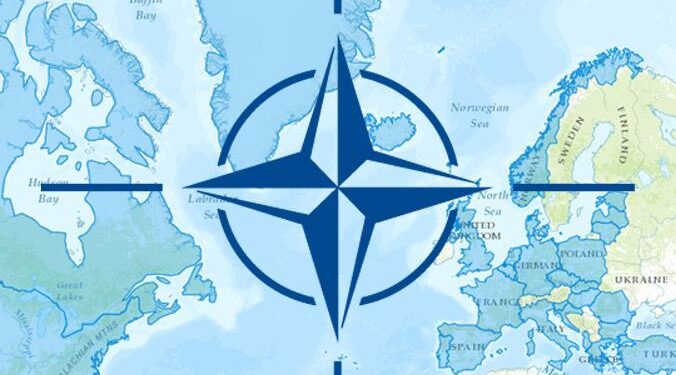On June 5, 2025, NATO unveiled its latest Science and Technology Strategy, marking a significant step in the alliance’s efforts to maintain technological superiority in an increasingly complex security landscape. The new strategy outlines NATO’s priorities for innovation, research, and collaboration with member states and partners to address emerging threats and enhance defense capabilities. This strategic update reflects the growing importance of cutting-edge technologies in ensuring collective security and adapting to future challenges.
NATO Unveils Forward-Looking Science and Technology Strategy to Enhance Alliance Capabilities
As technological advancements continue to reshape global security landscapes, the alliance has adopted a comprehensive strategy focused on innovation and collaboration. This new approach targets cutting-edge areas such as artificial intelligence, quantum computing, and cyber defense, aiming to bolster interoperability among member states while maintaining strategic advantage. The strategy places emphasis on fostering partnerships with academia, industry, and international research organizations to accelerate technological breakthroughs and ensure swift adoption of emerging capabilities. Key initiatives will prioritize resilience against evolving threats and enhance NATO’s ability to operate in complex environments.
The strategy outlines several critical objectives, including the rapid integration of dual-use technologies and the strengthening of data-sharing mechanisms across the alliance. Below is a summary of the primary focus areas defined in the strategy:
- Artificial Intelligence (AI): Developing robust frameworks for ethical and secure AI applications in defense.
- Quantum Technologies: Exploiting quantum computing and communication for secure information exchange.
- Cybersecurity: Enhancing collective cyber resilience and threat detection capabilities.
- Space Systems: Expanding surveillance and situational awareness through advanced satellite technologies.
- Autonomous Systems: Advancing unmanned platforms to support air, land, and sea operations.
| Strategic Priority | Expected Impact | Timeline |
|---|---|---|
| Accelerated R&D | Faster deployment of next-gen capabilities | 2025-2027 |
| Alliance-wide Collaboration | Unified tech standards & interoperability | Ongoing |
| Threat Anticipation | Early warning & rapid response mechanisms | 2025 onward |
Focus on Emerging Technologies Drives NATO’s Innovation Agenda
NATO’s latest strategy underscores a robust commitment to harnessing emerging technologies as a catalyst for maintaining strategic superiority. Critical areas such as artificial intelligence, quantum computing, and advanced cyber defenses are identified as cornerstone innovations that will shape the Alliance’s future capabilities. By fostering close collaboration between member states, academia, and industry, NATO aims to create an agile ecosystem that accelerates the transition from research to deployment in operational settings.
Key technology domains spotlighted include:
- Artificial Intelligence and Machine Learning: Enhancing decision-making and autonomous systems
- Quantum Technologies: Revolutionizing secure communications and encryption
- Cybersecurity Innovations: Defending critical infrastructure against evolving threats
- Hypersonics and Space Systems: Expanding reach and responsiveness in defense operations
| Technology | Potential Impact | Timeframe for Integration |
|---|---|---|
| AI-Enabled Command Systems | Faster, more accurate battlefield decisions | 3-5 years |
| Quantum Key Distribution | Unbreakable communication links | 5-7 years |
| Autonomous Drones | Enhanced surveillance and logistics | 2-4 years |
Experts Recommend Strengthening Collaborative Research and Rapid Tech Deployment
In addressing the rapidly evolving security environment, NATO experts emphasize the critical need for intensified collaboration across member nations and with academic institutions. By pooling expertise and resources, the alliance aims to accelerate innovation cycles and ensure that emerging technologies can be swiftly integrated into defense capabilities. This approach seeks to overcome traditional stovepipes and foster a dynamic ecosystem where knowledge transfer is seamless and research efforts are aligned with operational priorities.
Key focus areas include:
- Establishing multinational research consortia targeting next-generation AI, cyber defense, and quantum technologies.
- Creating agile funding mechanisms to support breakthrough projects without bureaucratic delays.
- Implementing rapid prototyping and testing frameworks to transition promising concepts directly into field-deployable solutions.
| Initiative | Expected Impact | Timeline |
|---|---|---|
| Joint Innovation Hubs | Enhanced cross-border R&D synergy | 2025-2027 |
| Rapid Deployment Units | Faster field integration of new tech | 2025-2026 |
| Funding Acceleration Programs | Reduced bureaucratic lag | Ongoing |
Insights and Conclusions
As NATO embarks on this updated Science & Technology Strategy, its commitment to innovation and technological advancement signals a strategic pivot aimed at maintaining allied superiority in an increasingly complex global security environment. The Alliance’s focus on emerging technologies underscores the critical role of scientific collaboration in addressing future threats and challenges. Stakeholders and observers alike will be watching closely as NATO seeks to translate this ambitious framework into tangible capabilities in the years ahead.






























